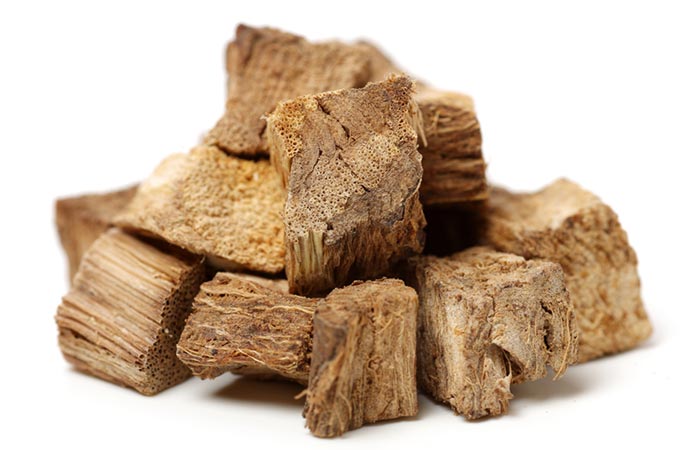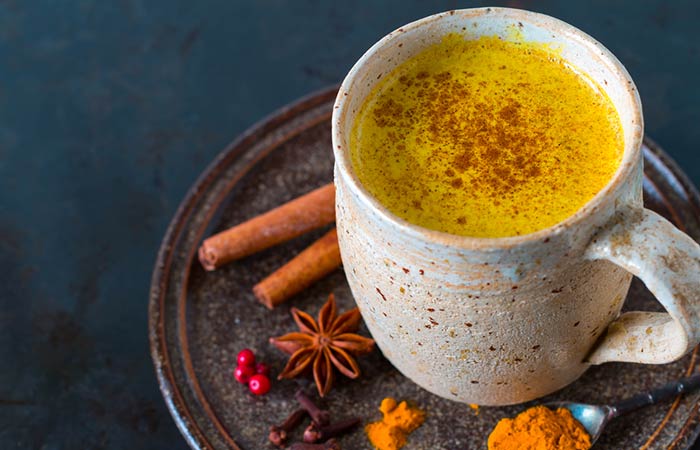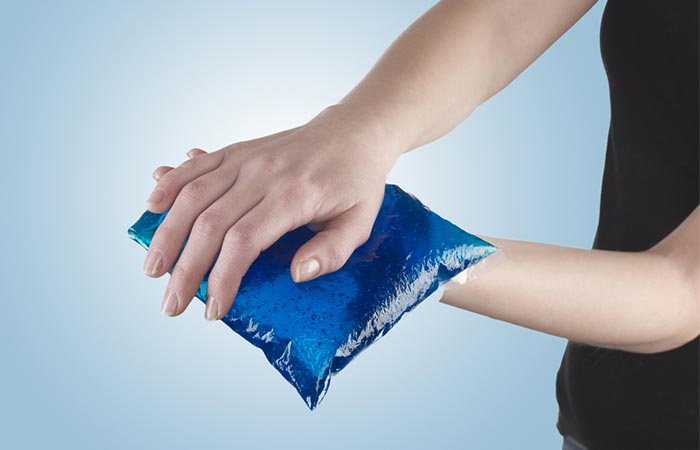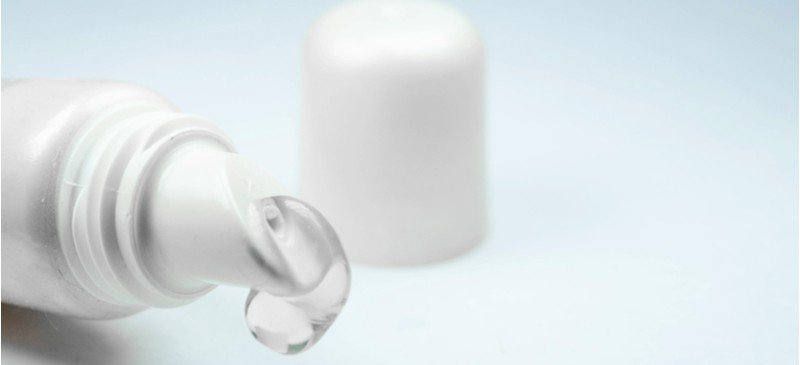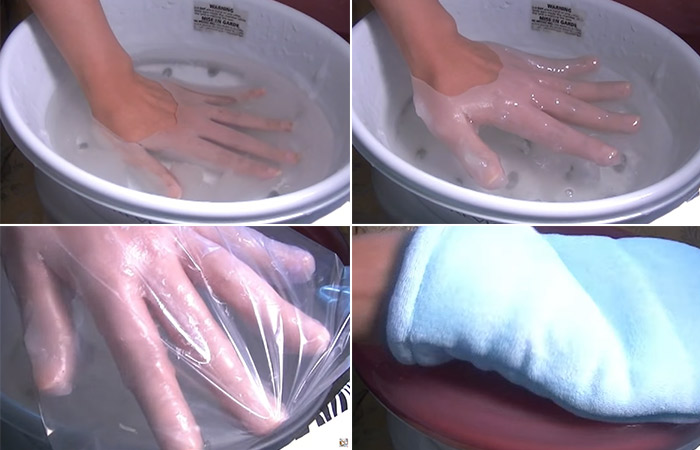It is a bright sunny day. Everyone seems perfectly fine doing their own thing. But wait, why don’t you feel the same? Your throat feels itchy, your body feels like it’s been carrying the weight of a thousand worlds on your shoulders, and you feel unusually cold, but your body feels warm. This is your body’s wake up call to you to tuck into bed with some hot soup and call it a day.
While you are waiting for an appointment with your doctor, you can also follow the home remedies discussed in this article to take care of your fever. Read on to know more.
Top 8 Effective Home Remedies For Fever
Fever Vs. Viral Fever
If you have fever, in most cases, it is nothing but the result of a mild infection. Fever is mainly caused due to any foreign bacteria that may have entered your body. It lasts for about three to four days, depending on the treatment process and medication.
Viral fever, on the other hand, is caused by a virus. A person who has viral fever experiences cough, body aches, joint and muscle pain, among other symptoms. It lasts for as long as seven to eight days or more.
Let us now look at some of the main differences between fever and viral fever.
- Fever
Fever usually lasts for less than seven days. Your body’s temperature may fluctuate between 98–99 °F, in case of a low-grade or mild fever.
Some of the common causes of fever are:
- Flu
- A weak immune system
- Sinus infection
- Headaches
- Viral Fever
Viral fever, as the term suggests, is a viral infection that is contracted through direct contact from person to person. Your body temperature shoots up to 104 °F, causing you to feel extremely cold.
Some of the causes are:
- Bites
- Body fluids
- Indigestion
- Common cold
The following are some of the main symptoms associated with fever in general.
Symptoms Of Fever
- Headache
- Body pain
- Throat pain
- Dehydration
- Feeling cold and body shivers
- Muscle and joint pain
- Lethargy
- Vivid dreams and hallucinations
You may show signs of fever that could be a combination of one or more of the above symptoms.
In the next section, we will discuss how to determine if you are running a temperature.
Fever Temperature Chart
The following is a temperature chart that can help you determine if you have fever. If the temperature reads above any of the below-mentioned readings, it indicates that you have fever.
- Infants: In infants, the temperature of the mouth is around 96-98.5°F, and the armpit reads roughly around 97-99°F.
- Children: Most children have a standard fever temperature chart. In the underarm, it measures about 98.6 °F. In the ear, it is about 99.6 °F, while the forehead reads a temperature of 99.6 °F.
- Adults: The average oral readings of an adult would be 97-99.5°F. Their armpits have a temperature of about 95-98.4°F.
If the temperature has risen beyond usual and is persistent, it is time for you to visit your doctor.
When To Visit Your Doctor
Most of us have had fever or viral fever at more than one point in our lives. Usually, the borderline temperature is about 98°F. Following mild medication and home remedies, such as staying hydrated, drinking fresh fruit juices, and use of hot and cold compresses, should bring the fever down.
In case there is no sign of improvement, it is strongly advised to visit a doctor during this period. Here are a few symptoms that you need to keep an eye for during which you should visit your doctor:
- Chest pain
- Severe headaches
- Frequent vomiting
- Abdominal pains
Now let us see how fever may be diagnosed.
Diagnosis
Your doctor may begin by asking you a few questions based on the symptoms you have been experiencing. They may suggest a chest examination accompanied by a blood test to rule out other life-threatening causes.
Depending on the severity of your illness, you will be prescribed medication by your doctor.
Over-The-Counter Medications
If your fever lasts long and you need to take medicines, listed below are a few options:
- Acetaminophen, also known as Tylenol
- Ibuprofen
- Aspirin
We recommend that you only buy medicines that are prescribed by your doctor. You need to be aware of your medication and what it is for. Make sure you read the directions of use and precautions before consuming them.
Home remedies are also a great way to subdue any mild illness, not just fever. Most of these home remedies use natural products that contain active compounds that exhibit medicinal properties. Let us now take a look at a few easy home remedies to manage and treat fever.
Home Remedies For Fever
1. Moringa

Shutterstock
Moringa has been widely used in traditional medicine to treat symptoms of fever and flu. It is known to exhibit anti-inflammatory and antimicrobial properties that can help reduce symptoms of inflammation and fight the microbes responsible for causing fever.
You Will Need
- Moringa tea bags
- A cup of boiled water
What You Have To Do
- Take a cup of boiled water.
- Steep a moringa tea bag in it for about 15 minutes.
- Consume while warm.
How Often Should You Do This
You can do this two times a day.
2. Kudzu Root
Kudzu root is derived from the roots of pueraria after it is dried completely.
It possesses antipyretic and anti-inflammatory properties that help reduce fever (2).
What You Will Need
- Kudzu root powder
- Boiled water
What You Have To Do
- Mix one teaspoon of kudzu root powder in a glass of warm water or milk.
- Consume while warm.
How Often Should You Do This
You can take this mixture once a day.
3. Ginger

Shutterstock
Ginger possesses anti-inflammatory and immunomodulatory properties that can help alleviate the symptoms of fever. The bioactive compounds of ginger may also help fight infection and reduce inflammation if you have throat pain.
You Will Need
- Ginger
- One glass of warm water
What You Have To Do
- Chop ginger into small pieces.
- Boil the slices of ginger in a pan with water.
- Drink this decoction when it is lukewarm.
How Often Should You Do This
You can have two cups per day.
4. Black Pepper
Black pepper contains bioactive compounds that possess anti-inflammatory and analgesic properties that may reduce symptoms like body aches, joint aches, and headaches associated with fever.
You Will Need
- 1/2 teaspoon of crushed black pepper kernel
- 1 tablespoon of honey
- 1 glass of water
What You Should Do
- Boil a glass of water in a pan.
- Add half a teaspoon of crushed black pepper kernel and honey to it.
- Drink when it is lukewarm.
How Often Should You Do This
Have a cup of this every day until the fever subsides.
5. Turmeric Milk
Curcumin is a major component of turmeric. Research shows that it possesses properties that can mitigate any inflammation that may surface with fever or flu. It possesses antipyretic properties that decrease body temperature during fever.
You Will Need
- 1 teaspoon of turmeric powder
- 1 glass of warm milk
What You Should Do
- Boil a glass of milk.
- Add a teaspoon of turmeric and mix well.
- Drink while it is warm.
How Often Should You Do This
Have one cup two times a day.
In addition to these home remedies, making certain simple changes to your everyday lifestyle can help relieve symptoms of fever.
6. Increase Your Fluid Intake
When you have fever, your body tends to get extremely dehydrated. It uses up all the fluids to flush out bacteria from your system. Staying hydrated is necessary, but to feel stronger and less lethargic, having other healthy fluids like fruit juices helps a great deal.
Fruit juices and fruits are a great way to boost your energy and fluid intake. You can take about two glasses of fresh fruit juice each day until the fever subsides.
7. Get Plenty Of Rest
Stress could also lead to fever. Fever could also be a wake-up call to get sufficient rest. Adults are constantly on the go, and what they need is adequate rest. This is an easy, yet promising home remedy for fever. Getting adequate rest cures a majority of illnesses, including fever.
8. Stay Cool
Since your body runs a high temperature during fever, placing a cold wet cloth over your forehead can help. It brings your body temperature down instantly and alleviate the discomfort that accompanies fever.
A cold compress can be used as and when your body temperature rises during the day due to fever. It will bring down your body temperature instantly.
These are a few tried and tested remedies that you can follow from the comfort of your home. You could try either one or a combination of these remedies to obtain the best results. You may now want to know how to prevent yourself from falling sick in the first place. Read on to find out more.
How Can You Prevent Fever?
It does not take much to prevent yourself from catching fever or cold. If good personal hygiene is followed, you can save yourself the trouble and pain of falling sick. Listed below are some of the tips to keep fever at bay:
- Drink plenty of water and other fluids. This keeps you hydrated and aids in flushing out harmful bacteria.
- Sufficient rest is another key factor that prevents fever. A good night’s sleep and a healthy diet do more good to the body than you can imagine.
- We suggest over-the-counter medication if the fever persists. Do remember to consult your doctor.
We hope that you benefit from these remedies and recover soon. However, if you think that your fever has lasted too long, you must consult your doctor and seek medical treatment.
Try these remedies and share your feedback by leaving a comment in the box below.
Adding question and answers for articles
Frequently Asked Questions
Can I have tea when I am down with fever?
Green tea and ginger tea are two of the most efficient remedies to reduce fever (or even a cold). They can help promote faster recovery.
Is it good to sweat when you’re down with fever?
When you have fever, your body temperature fluctuates. In order to regulate body temperature, your brain sends a message to the sweat glands to release body heat in the form of sweat. Therefore, it is good to sweat when you have fever.
Can allergies cause fever?
It is easy to mistake symptoms of allergy for fever. Allergies may cause flu, rashes, or other skin conditions, but they most likely do not cause fever.
Can a sinus infection cause fever?
Sinus is a bacterial infection that causes flu, headaches, and a runny nose. It is possible to experience a low-grade fever during this period.
10 sources
- Bioactive Components in Moringa Oleifera Leaves Protect against Chronic Disease, MDPI, US National Library of Medicine, National Institutes of Health.
https://www.ncbi.nlm.nih.gov/pmc/articles/PMC5745501/ - Kudzu root: traditional uses and potential medicinal benefits in diabetes and cardiovascular diseases, Journal of Ethnopharmacology, US National Library of Medicine, National Institutes of Health.
https://www.ncbi.nlm.nih.gov/pubmed/21315814 - Anti-Oxidative and Anti-Inflammatory Effects of Ginger in Health and Physical Activity, International Journal of Preventive Medicine, US National Library of Medicine, National Institutes of Health.
https://www.ncbi.nlm.nih.gov/pmc/articles/PMC3665023/ - Active ingredients of ginger as potential candidates in the prevention and treatment of diseases via modulation of biological activities, International Journal of Physiology, Pathophysiology and Pharmacology, US National Library of Medicine, National Institutes of Health.
https://www.ncbi.nlm.nih.gov/pmc/articles/PMC4106649/ - Analgesic and anti-inflammatory, US National Library of Medicine, National Institutes of Health.
https://www.ncbi.nlm.nih.gov/pubmed/25312168 - Preventive Effects of Curcumin, US National Library of Medicine, National Institutes of Health.
https://www.ncbi.nlm.nih.gov/pmc/articles/PMC3700082/ - Water, Hydration and Health, Nutrition Reviews, US National Library of Medicine, National Institutes of Health.
https://www.ncbi.nlm.nih.gov/pmc/articles/PMC2908954/ - Sleep and immune function, Pflügers Archiv: European Journal of Physiology, US National Library of Medicine, National Institutes of Health.
https://www.ncbi.nlm.nih.gov/pmc/articles/PMC3256323/ - Physical methods for the treatment of fever in critically ill patients, Journal of School of Nursing USP, ResearchGate.
https://www.researchgate.net/publication/311504985_Physical_methods_for_the_treatment_of_fever_in_critically_ill_patients_A_randomized_controlled_trial - Comparison of Cold Water Sponging and Acetaminophen in Control of Fever, Journal of Family Medicine and Primary Care, US National Library of Medicine, National Institutes of Health.
https://www.ncbi.nlm.nih.gov/pmc/articles/PMC3894045/
The post Top 8 Effective Home Remedies For Fever appeared first on STYLECRAZE.
